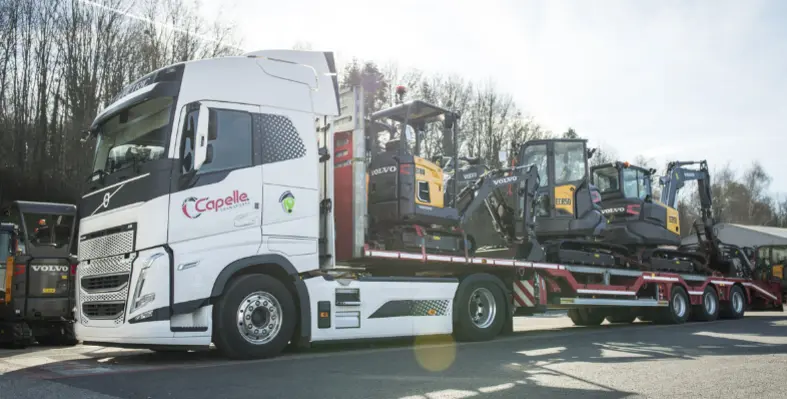Volvo Construction Equipment (Volvo CE) and Volvo Trucks have collaborated with logistics firm Capelle Transports to pilot an electric shuttle delivery solution, aimed at enhancing sustainability in their operations
The e-shuttle service focuses on reducing CO2 emissions during the initial transport leg of construction machines from the Volvo CE factory in Belley, France. It also aims to optimise the loading of each truck trailer leaving the yard, thus increasing efficiency.
Traditionally, Volvo Compact Excavators were distributed using conventional trucks. In the trial setup, these machines were transported from Belley to a logistics centre near Lyon using a 100% electric Volvo FH Electric truck, fully maximising loading capacity. From Lyon, the excavators were dispatched more easily to continue their journey to the customer.
The Volvo Group aims to reduce its indirect Scope 3 emissions by 30% by 2030, a goal recognized by the Science Based Targets initiative. This trial demonstrates the necessity for innovative collaborations and tailored solutions beyond the introduction of electric technology to achieve a holistic net-zero value chain.
The pilot involved loading compact excavators, including Volvo CE's zero-emission solutions like the EC18 Electric, ECR18 Electric, and ECR25 Electric, onto electric trucks for the initial leg of their journey between Belley and a logistics centre near Lyon.
Hui-I Tsai, head of global outbound logistics at Volvo CE, said, “This project contributes to reduced CO2 emissions during the initial transportation of our products and is another milestone in our efforts to achieve a more sustainable operation. In addition, since transporters have been able to pick up our machines more frequently, we have seen a reduction in the amount of stock in our yard.”
Ghislain Fantou, production logistics purchasing at Volvo Group Truck Operations, said, “As a leader in logistics transport, we have a clear objective to reduce CO2 together with our contracted carriers. To do this, we identify opportunities in our processes where we could introduce electric transport, particularly for such short-distance round-trip flows.”





